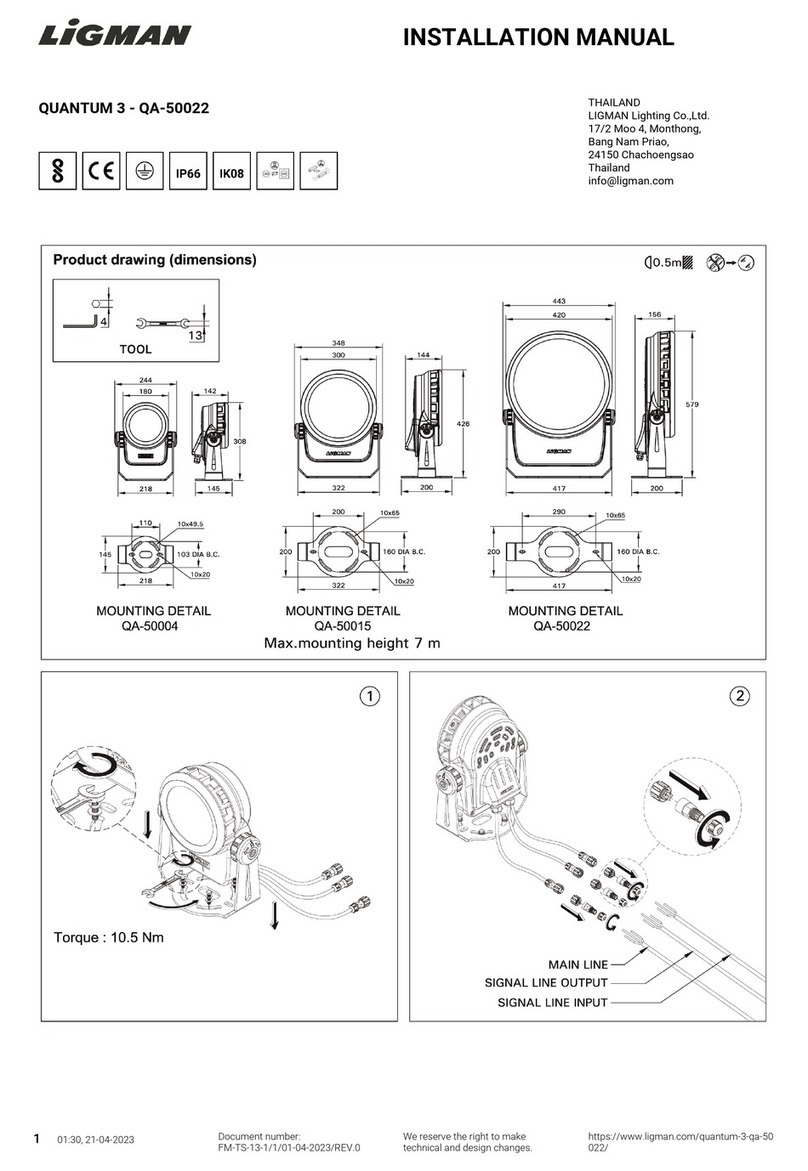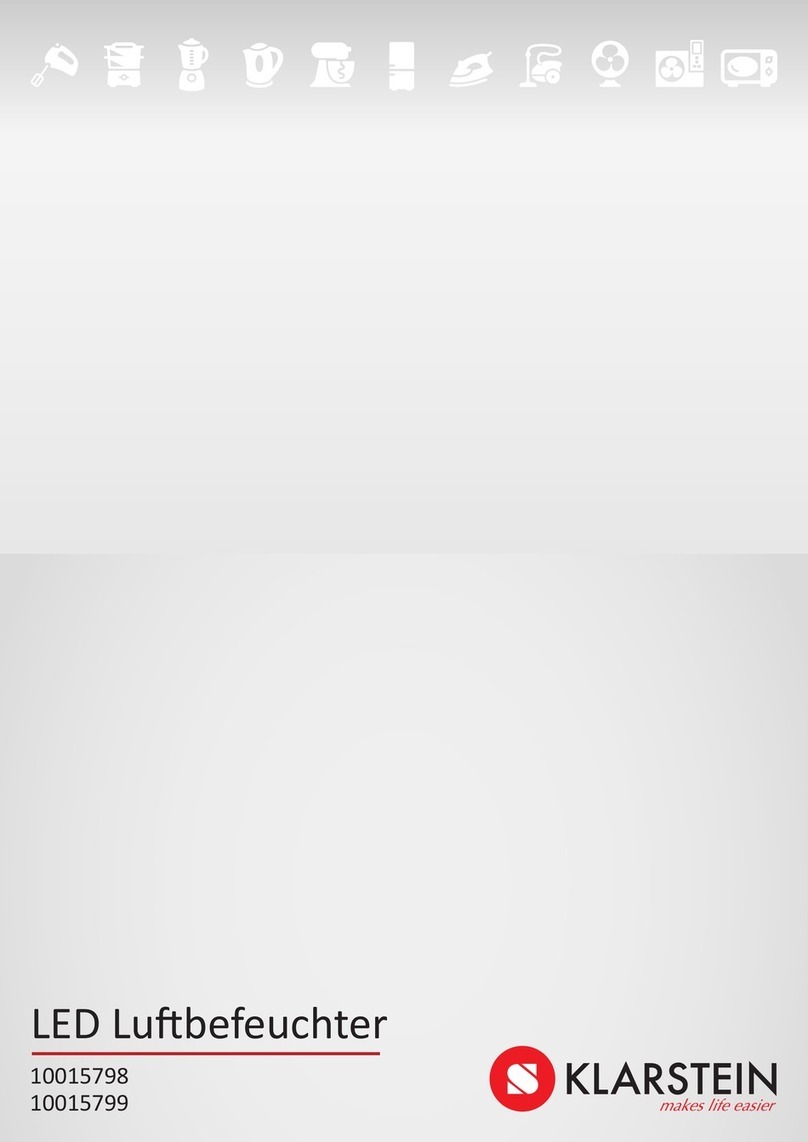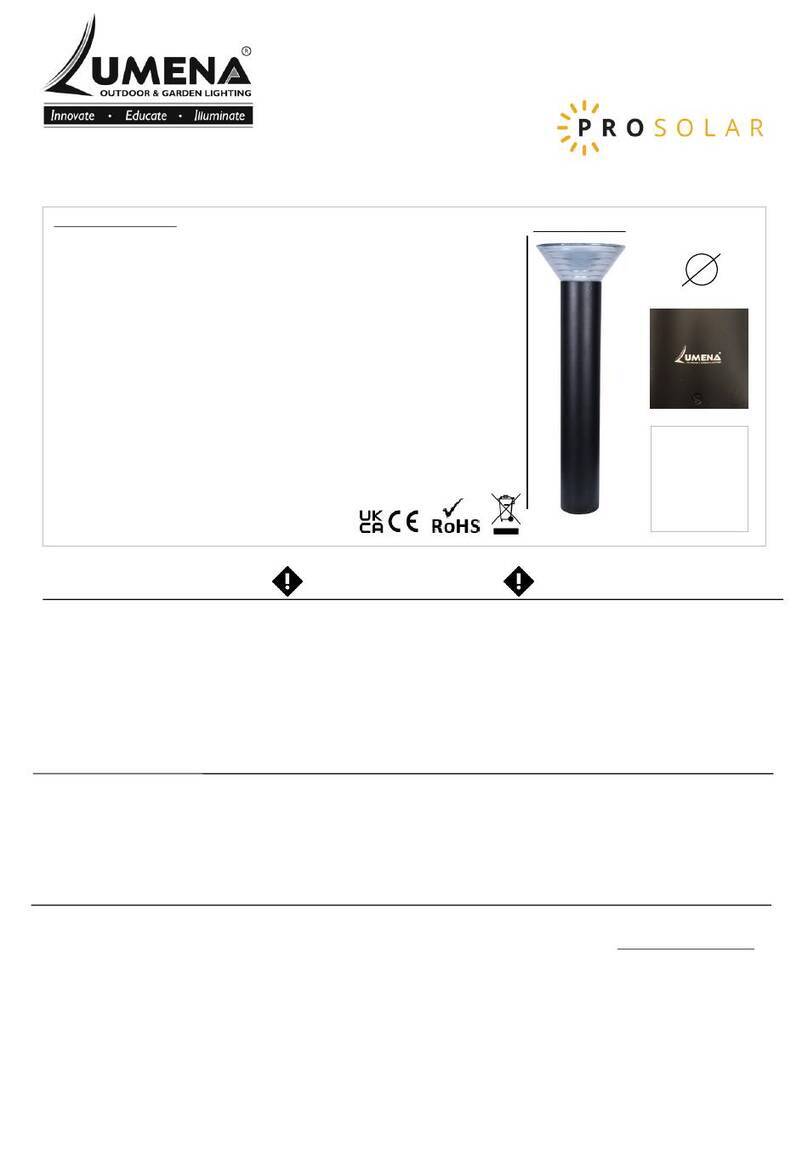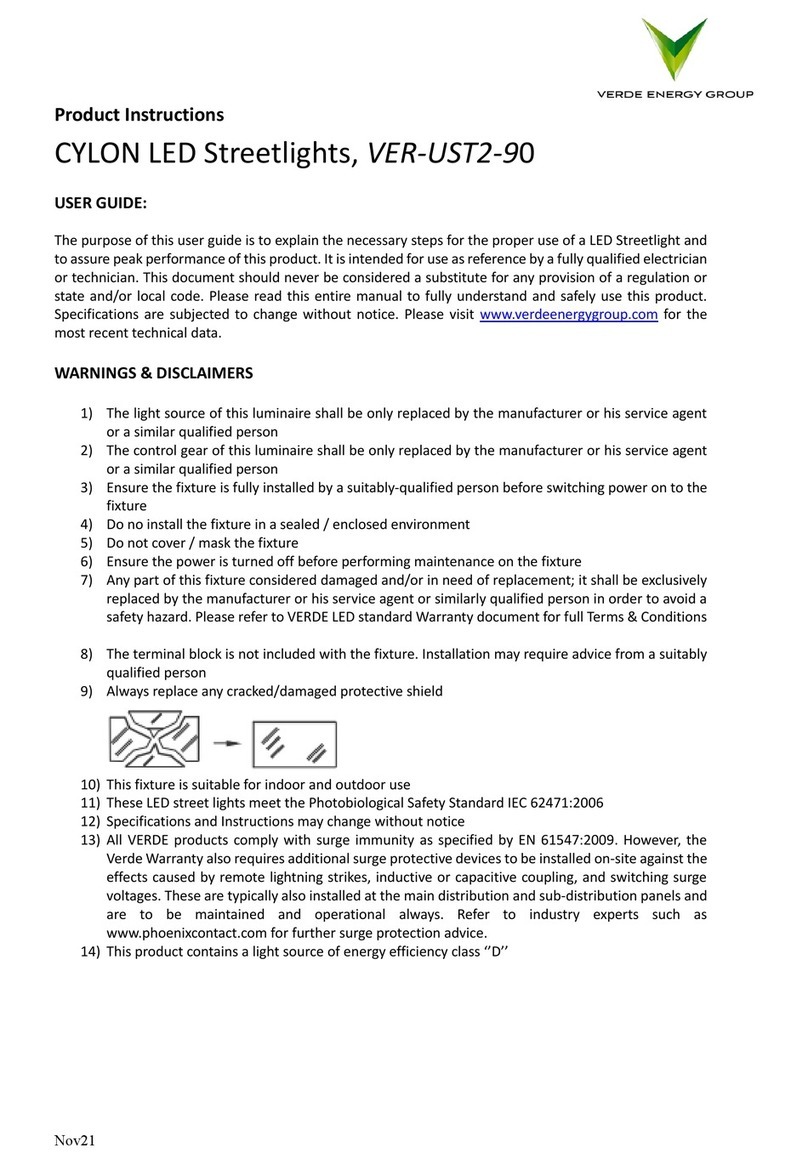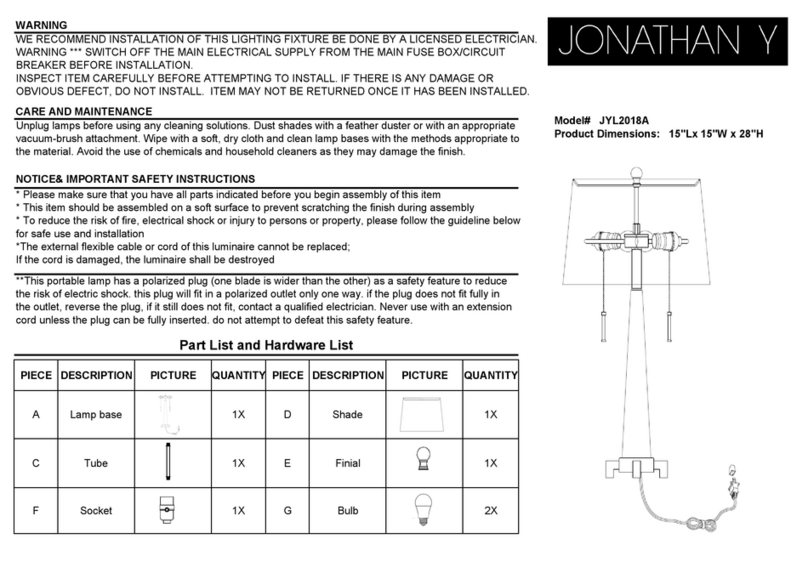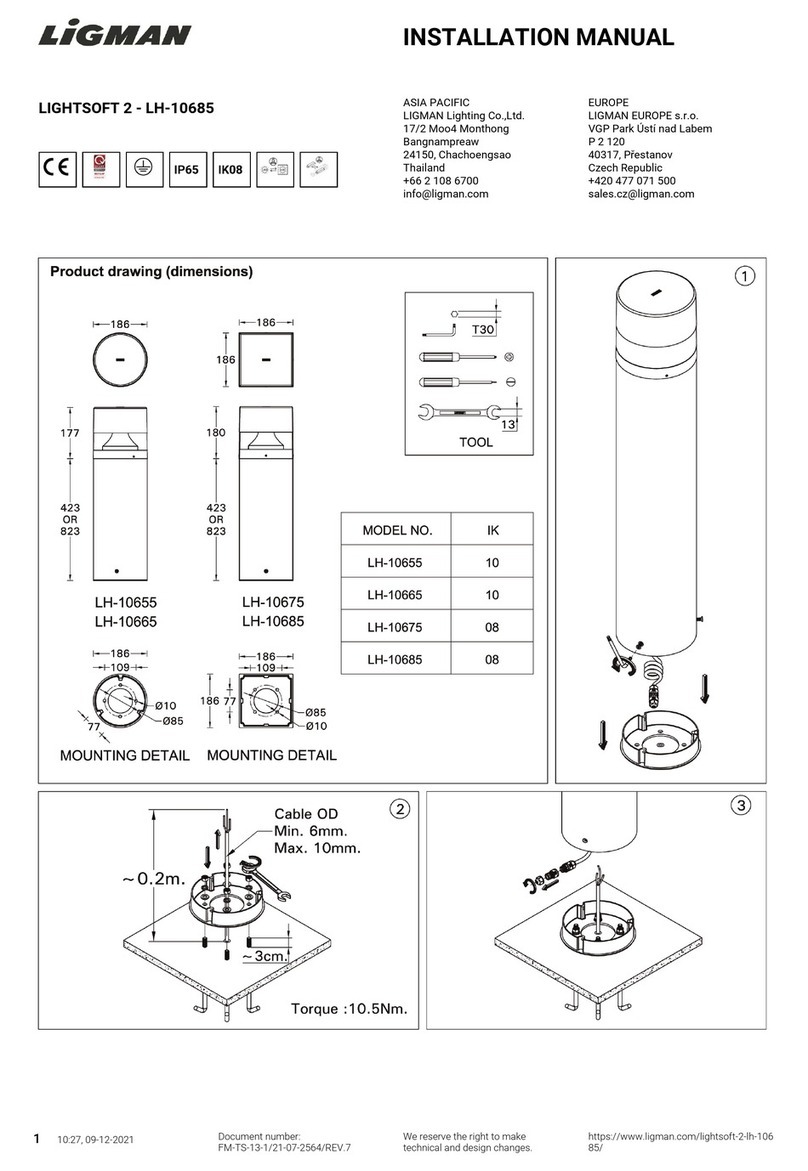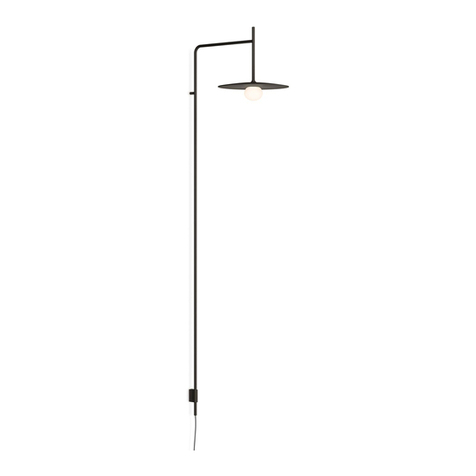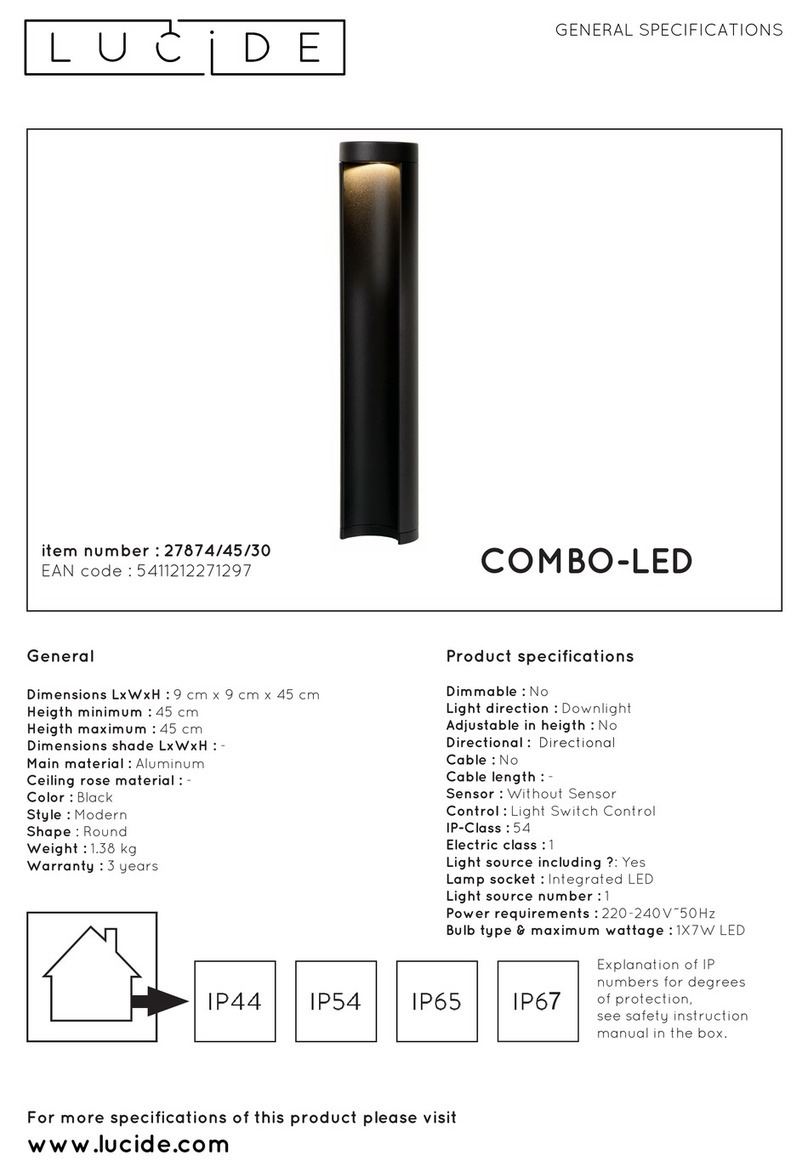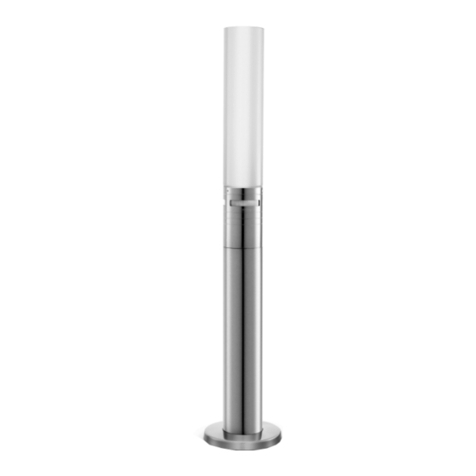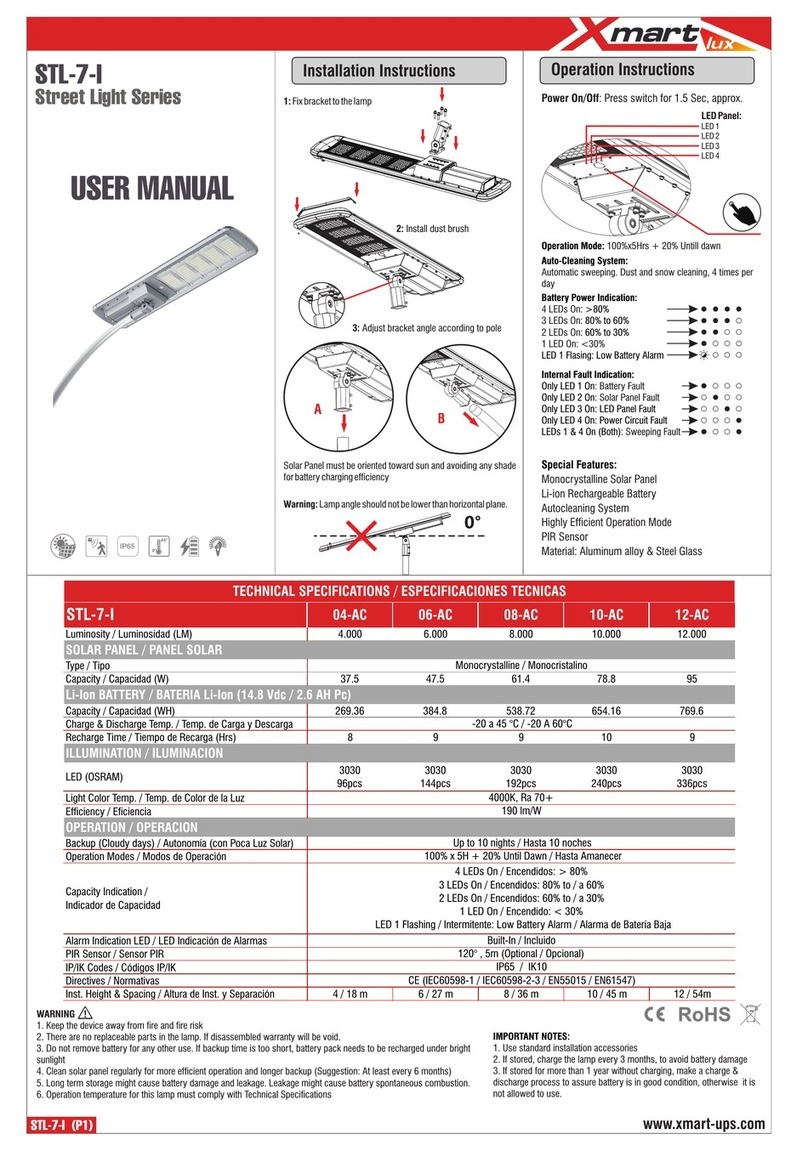Vizionary Products SOLARI User manual

!
Page 1
SOLAR POWERED DUAL PURPOSE OUTDOOR LED WALL LIGHT
THANK YOU!
Vizionary Products would like to thank you for purchasing
this quality product through Amazon. Once you have enjoyed
using it, we would greatly appreciate it if you could take the
trouble to post a review of this product on Amazon.
The following instructions describe the correct operating
method to ensure prolonged service life. Please familiarize
yourself with these instructions before operating your solar light.
We suggest you keep these instructions for future reference.
INTRODUCTION
This type of light uses solar power and lithium ion battery
technology, and is ideal for entranceways, walkways, carports
and other areas where electricity is not available or wiring is
not desired.
During the day, the solar panel at the
top of
the unit will
charge the battery inside. At dusk, one LED (light emitting
diode) will activate automatically using the stored energy from
the sun to provide a constant, warm, effective yet unobtrusive
light. If, at any time, motion is detected by the PIR (Passive
InfraRed sensor) a second, brighter LED will activate for your
safety, security and convenience.
PASSIVE INFRARED (PIR) MOTION SENSOR
This sensor has a range of up to 5 meters with a 90
0
detection range,
both vertically and horizontally (see Figure 1).
POSITIONING YOUR SOLAR LIGHT(S)
•Your solar light includesa built-in photo sensor, which
detects the level of surrounding light and controls when
your light will switch on and off. If you wish to install more
than one solar light, place them at least 1.5 meters apart.
They should also be mounted away from other nighttime
light sources that could prevent the solar lights from
turning on automatically at dusk.
•Ideally, you should locate your solar light in an area where it will
receive the maximum daily amount of direct sunlight.
•To charge the battery fully your solar light should be exposed to at
least 4,5 hours of direct sunlight each day. Shady locations
may not allow the battery to charge fully and may reduce
the number of hours of nighttime light provided.
•You will no doubt appreciate that the performance of your
solar light is also dependent on your geographical location,
weather conditions and season.On cloudy days and during
winter, your solar light will receive less direct sunlight and this
may result in reduced operating time and brightness.
•When choosing a suitable location for
your
solar light,
remember that the PIR sensor detects an area of
approximately 90 degrees both horizontally and vertically,
within a range of up to 5 meters (see figure 1).
•The recommended mounting height for your solar light is
approximately 1.6 metersbut this will depend on your
application.
ASSEMBLY & INSTALLATION (Figure 2)
This pack should come complete with the following:
1 x solar wall light with PIR sensor (Part A)
1 x fastening screw (Part B)
1 x plastic wall anchor (Part C)
To install your solar light, please follow the steps below:
Step 1: Locate a wall or vertical surface where you wish to
mount your light:
•Before securing the light to the wall or surface, it is
recommended that you first check the light effect at night to be
sure you are completely happy with the position you have
chosen, for both the lighting effect and the PIR sensor range.
•It is also important to remember that lights should be installed in
a location that will receive sufficient direct sunlight each day.
CONCRETE /MASONRY SURFACE INSTALLATION
Step 2: Drill a hole into the surface suitable to accommodate
the plastic anchor (C) snugly. Then insert the anchor into
the hole.

!
Page 2
SOLAR POWERED DUAL PURPOSE OUTDOOR LED WALL LIGHT
Step 3: Drive screw (B) into the plastic anchor (C) leaving the
head of the screw protruding about 5mm from the surface.
Step 4: Fix the solar light (A) to the surface by hooking the
keyhole (mounting bracket) at the back of the light body over the
head of the screw you installed in step 3. You can further
secure the unit using double sided tape should you wish.
WOODEN POST OR PLASTERBOARD INSTALLATION
Step 2: Drive screw (B) into the surface leaving the head protruding
about 5mm from the surface.
Step 3: Fix the solar light (A) to the surface by hooking the
keyhole (mounting bracket) at the back of the light body over the
head of the screw you installed in step 3. You can further
secure the unit using double sided tape should you wish.
FIRST TIME USE
The battery in your solar light should be fully charged before first
time use. To charge the battery, follow the steps below:
Step 1: Locate the AUTO/OFF push button at the back of the
light body (A) and ensure it is in the OFF position.
Step 2: Place solar light in full direct sunlight for 36-48
hours before first time use. The unit will achieve optimum
light output after 4 days of exposure to sunlight, enabling the
battery to charge fully.
Step 3: After you have charged the battery fully, switch the
AUTO/OFF button to the AUTO position. Your solar light will
now automatically switch on at dusk. The PIR motion sensor
will also activate the LED during nighttime hours.
!
BATTERY REPLACEMENT (Figure 3)
Step 1: Remove the light unit from its installed position and
turn it upside down.
Step 2: Using a small Phillips screwdriver remove the 5 screws
that securethe stainless steel base to the internal plastic cover.
Step 3: Lift off the plastic cover to reveal the main body and
battery compartment.
Step 4: Replace the old battery with a new rechargeable
3.2V, 500mAh,LiFePO4 battery. The Lithium-ion battery
included in this light should last for approximately 5 years
depending on frequency of use.
IMPORTANT: When the battery life is exhausted,
ensure that you recycle or properly dispose of battery.
DO NOT DISPOSE OF THE BATTERY IN A FIRE.
Step 5: Replace plastic cover onto the front section of the light,
taking care to align the AUTO/OFF rubber cover with the
AUTO/OFF button inside the battery compartment. Press the
cover down firmly until it clicks into place.
Step 6: Re-attach the stainless steel base over the plastic cover and
secure using the 5 screws removed in step 2.
Step 7: Fully charge the battery by repeating the steps under the
"First Time Use" section.
TROUBLESHOOTING
If your solar light does not automatically turn on at night, it
may be due to one of the following conditions:
1. AUTO/OFF button is not in the AUTO position.
2. The battery is not properly charged, needs replacing or is
the incorrect type.
3. The battery may be loose or installed incorrectly.
4. The solar light may be too close to another nighttime light
source, including another solar light.
If the LED controlled by the PIR sensor is not activating, check to
ensure that the light has been directed towards the detection
area. Refer to figure 1.and re-position the light if necessary.
If the LED controlled by the FIR sensor does not remain ON for a
long period of time, please note that the activation time is
determined by how close you are standing to the PIR sensor. This is
to prevent false triggering and to preserve battery life.
Please note:
•If you are standing on the outer edge of the 5-meter detection
range, the motion sensor LED will activate for just 20
seconds (unless you then move closer towards the light).
•If you remain within 20 cm of the sensor,the light will stay lit
for a maximum of 40 seconds.
!
!
!
Vizionary Products
www.vizionaryproducts.com!
